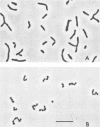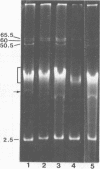Abstract
Arthrobacter sp. strain TE1 isolated from s-ethyl-N,N-dipropylthiocarbamate (EPTC)-exposed soil degraded this herbicide effectively and could grow on EPTC as the sole carbon source. TE1 harboured four plasmids of 65.5, 60, 50.5, and 2.5 megadaltons. Spontaneous mutants unable to degrade EPTC arose at a high frequency, and this was further increased by treatment of the culture with acridine orange or incubation at high temperature. All EPTC degradation-deficient (E-) mutants lacked the 50.5-megadalton plasmid. This plasmid could be transferred from TE1 to E- mutants by conjugation, resulting in the restoration of EPTC-degrading ability to the mutants.
Full text
PDF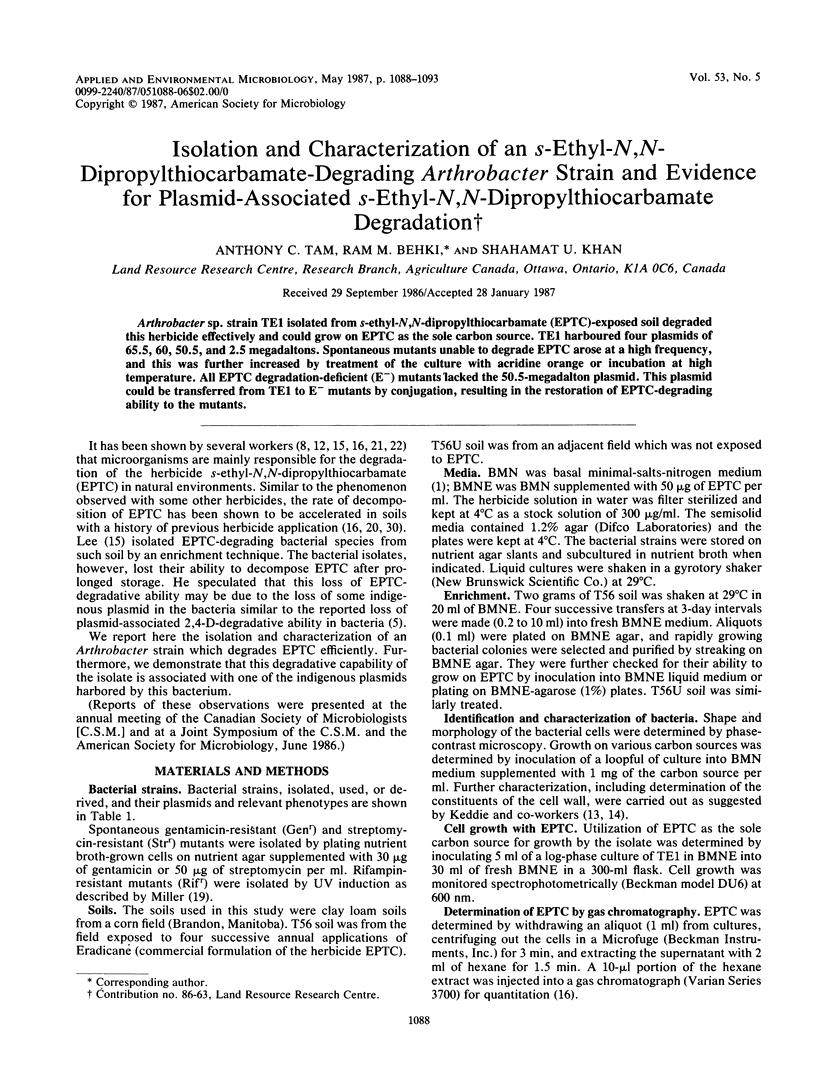
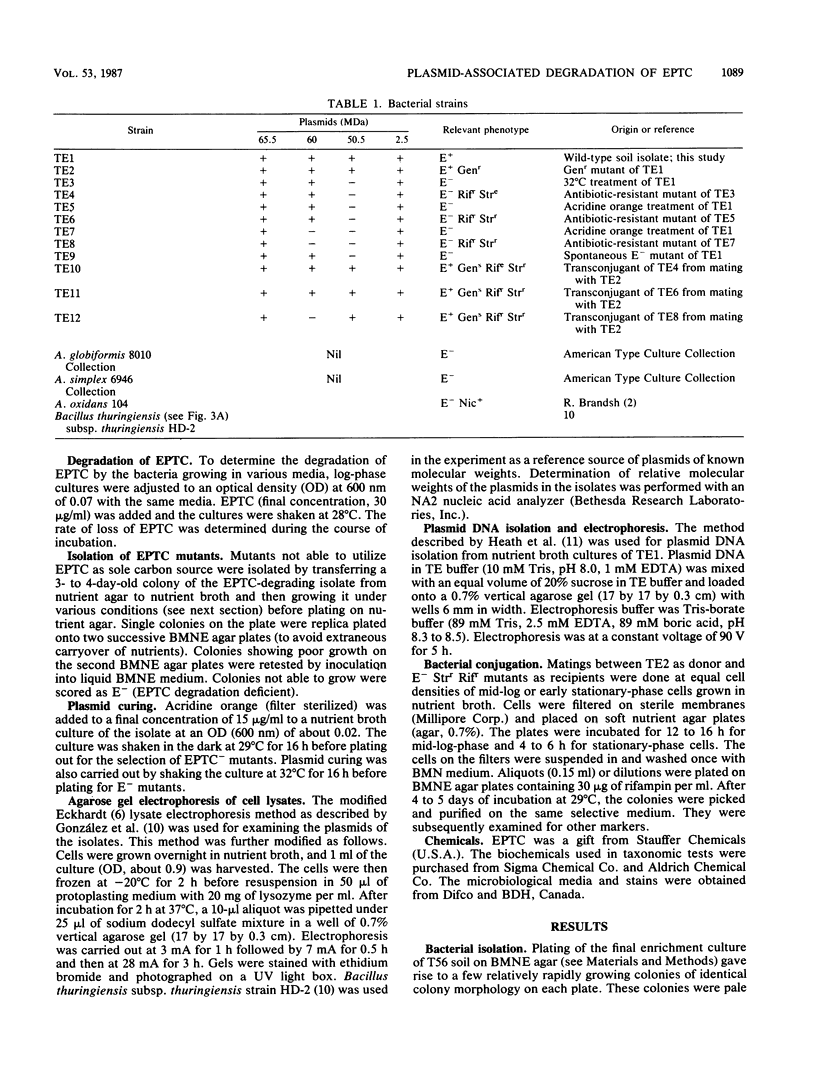



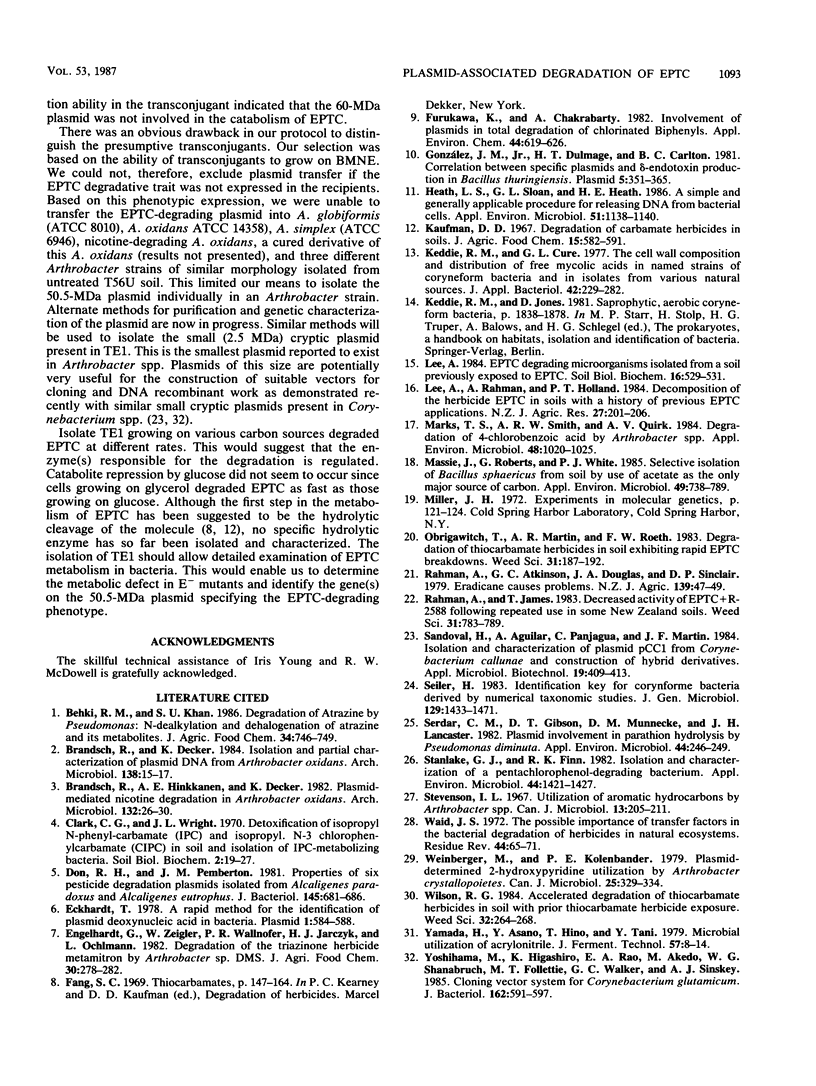
Images in this article
Selected References
These references are in PubMed. This may not be the complete list of references from this article.
- Brandsch R., Decker K. Isolation and partial characterization of plasmid DNA from Arthrobacter oxidans. Arch Microbiol. 1984 May;138(1):15–17. doi: 10.1007/BF00425400. [DOI] [PubMed] [Google Scholar]
- Don R. H., Pemberton J. M. Properties of six pesticide degradation plasmids isolated from Alcaligenes paradoxus and Alcaligenes eutrophus. J Bacteriol. 1981 Feb;145(2):681–686. doi: 10.1128/jb.145.2.681-686.1981. [DOI] [PMC free article] [PubMed] [Google Scholar]
- Eckhardt T. A rapid method for the identification of plasmid desoxyribonucleic acid in bacteria. Plasmid. 1978 Sep;1(4):584–588. doi: 10.1016/0147-619x(78)90016-1. [DOI] [PubMed] [Google Scholar]
- Furukawa K., Chakrabarty A. M. Involvement of plasmids in total degradation of chlorinated biphenyls. Appl Environ Microbiol. 1982 Sep;44(3):619–626. doi: 10.1128/aem.44.3.619-626.1982. [DOI] [PMC free article] [PubMed] [Google Scholar]
- González J. M., Jr, Dulmage H. T., Carlton B. C. Correlation between specific plasmids and delta-endotoxin production in Bacillus thuringiensis. Plasmid. 1981 May;5(3):352–365. doi: 10.1016/0147-619x(81)90010-x. [DOI] [PubMed] [Google Scholar]
- Heath L. S., Sloan G. L., Heath H. E. A simple and generally applicable procedure for releasing DNA from bacterial cells. Appl Environ Microbiol. 1986 May;51(5):1138–1140. doi: 10.1128/aem.51.5.1138-1140.1986. [DOI] [PMC free article] [PubMed] [Google Scholar]
- Keddie R. M., Cure G. L. The cell wall composition and distribution of free mycolic acids in named strains of coryneform bacteria and in isolates from various natural sources. J Appl Bacteriol. 1977 Apr;42(2):229–252. doi: 10.1111/j.1365-2672.1977.tb00689.x. [DOI] [PubMed] [Google Scholar]
- Marks T. S., Smith A. R., Quirk A. V. Degradation of 4-Chlorobenzoic Acid by Arthrobacter sp. Appl Environ Microbiol. 1984 Nov;48(5):1020–1025. doi: 10.1128/aem.48.5.1020-1025.1984. [DOI] [PMC free article] [PubMed] [Google Scholar]
- Seiler H. Identification key for coryneform bacteria derived by numerical taxonomic studies. J Gen Microbiol. 1983 May;129(5):1433–1471. doi: 10.1099/00221287-129-5-1433. [DOI] [PubMed] [Google Scholar]
- Serdar C. M., Gibson D. T., Munnecke D. M., Lancaster J. H. Plasmid Involvement in Parathion Hydrolysis by Pseudomonas diminuta. Appl Environ Microbiol. 1982 Jul;44(1):246–249. doi: 10.1128/aem.44.1.246-249.1982. [DOI] [PMC free article] [PubMed] [Google Scholar]
- Stanlake G. J., Finn R. K. Isolation and characterization of a pentachlorophenol-degrading bacterium. Appl Environ Microbiol. 1982 Dec;44(6):1421–1427. doi: 10.1128/aem.44.6.1421-1427.1982. [DOI] [PMC free article] [PubMed] [Google Scholar]
- Stevenson I. L. Utilization of aromatic hydrocarbons by Arthrobacter spp. Can J Microbiol. 1967 Feb;13(2):205–211. doi: 10.1139/m67-027. [DOI] [PubMed] [Google Scholar]
- Waid J. S. The possible importance of transfer factors in the bacterial degradation of herbicides in natural ecosystems. Residue Rev. 1972;44:65–71. doi: 10.1007/978-1-4615-8491-9_4. [DOI] [PubMed] [Google Scholar]
- Weinberger M., Kolenbrander P. E. Plasmid-determined 2-hydroxypyridine utilization by Arthrobacter crystallopoietes. Can J Microbiol. 1979 Mar;25(3):329–334. doi: 10.1139/m79-052. [DOI] [PubMed] [Google Scholar]
- Yoshihama M., Higashiro K., Rao E. A., Akedo M., Shanabruch W. G., Follettie M. T., Walker G. C., Sinskey A. J. Cloning vector system for Corynebacterium glutamicum. J Bacteriol. 1985 May;162(2):591–597. doi: 10.1128/jb.162.2.591-597.1985. [DOI] [PMC free article] [PubMed] [Google Scholar]



